Q
how to reset toyota yaris abs light without scan tool
If you need to reset the ABS light on your Toyota Yaris without a scan tool, here's a trick to try: First, make sure the car's turned off, then disconnect the negative battery terminal for about 10 minutes. This lets the onboard computer reset itself. After reconnecting and starting the car, check if the ABS light goes off. If it's still on, there might be an issue like a dirty ABS sensor or a faulty wheel speed sensor that needs further checking.
For Malaysian Yaris owners, the local humid climate tends to cause sensor connectors to oxidize. Regularly cleaning debris around the brake system can help reduce false warnings. If the ABS light stays on even after trying the reset, it's best to head to a professional workshop ASAP to get the fault codes read with an OBD scanner. Remember, the ABS system is crucial for driving safety—ignoring the light long-term could lead to wheel lock-up during hard braking.
One thing to note: Reset methods can vary slightly between Yaris model years. Post-2014 models have more complex electronic systems, so the battery disconnect trick might not work as reliably. In those cases, check if the fuse or ABS pump relay is functioning properly. And if you ever see the ABS light come on along with the brake warning light, pull over immediately to check your brake fluid level—this could signal a problem with the entire braking system.
Special Disclaimer: This content is published by users and does not represent the views or position of PCauto.
Related Q&A
Q
What is the sport mode on a 2019 Toyota Yaris?
The Sport Mode on the 2019 Toyota Yaris is a drive mode selection feature that primarily enhances power response and handling by adjusting the vehicle's electronic control systems. When activated, the transmission delays upshifts to keep the engine in a higher rev range, delivering quicker acceleration, while the steering might feel slightly heavier to improve road feedback. This mode works best for highway overtaking or mountain road driving, letting the 1.5L naturally aspirated engine stretch its legs a bit more. Keep in mind, though, that Sport Mode does bump up fuel consumption slightly, so it's best used for short bursts when you need that extra zip. Rivals like the Honda Jazz or Mazda 2 offer similar modes too, but each has its own tuning—some focus on linear acceleration, others on sharpening cornering stability. Running Sport Mode all the time could speed up wear on the drivetrain, so make sure to check your transmission fluid and engine condition regularly. Also, pairing it with the manual shift function can take the driving experience up another notch.
Q
How to check transmission fluid 2019 Toyota Yaris?
To check the transmission fluid in a 2019 Toyota Yaris, first make sure the vehicle is parked on level ground and start the engine to let the transmission reach operating temperature (usually after driving for 10-15 minutes). Shift through all gears briefly, then return to Park and engage the parking brake. Open the hood and locate the transmission dipstick (typically with a red or yellow handle, near the firewall). Pull out the dipstick, wipe it clean, reinsert it fully, then pull it out again to check the fluid level—it should be within the "HOT" marks. Also inspect the fluid color (normally clear red; if it's black or has a burnt smell, it needs to be changed promptly). Note that some newer Yaris models may have a sealed transmission without a dipstick; these require a professional technician with special tools to check or replace the fluid. Regularly checking the transmission fluid protects the drivetrain effectively. It's recommended to replace it every 40,000-60,000 kilometers or as specified in the maintenance manual. If you frequently drive in stop-and-go traffic, you can shorten this interval slightly. Using non-genuine fluid may cause gear-shifting hesitation or transmission damage, so Toyota's original ATF WS fluid is recommended.
Q
What engine does a 2019 Toyota Yaris have?
The 2019 Toyota Yaris offers a range of engine options across different markets, with specific configurations varying by trim level and regional specs. Common powerplants include a 1.5-liter four-cylinder naturally aspirated engine (badged 1NZ-FE or an updated variant), pushing out around 107 horsepower. This unit pairs with either a 5-speed manual or 4-speed automatic transmission. Higher-spec models might upgrade to a more efficient 1.2-liter turbocharged engine or a hybrid system. Known for reliability and fuel efficiency, this engine uses Dual VVT-i variable valve timing to optimize low-end torque and high-speed power delivery—perfect for city driving. It’s worth noting that the same-generation Yaris also spawned the GR Sport variant, packing a more potent 1.6-liter turbo engine, though these performance models are pretty rare locally. For maintenance, stick to the 10,000 km or 6-month interval for full synthetic oil changes, and regularly clean the throttle body to keep the engine running efficiently. Toyota’s factory 100,000 km warranty is a nice bonus too, helping cut down on long-term repair costs. If you’re eyeing a used Yaris, pay extra attention to the engine mount bushings and timing chain condition—these are common wear items on higher-mileage examples.
Q
Is the 2019 Yaris a Mazda?
The 2019 Yaris isn't a Mazda; it's a classic compact car from Toyota. However, it's worth noting that in some markets like North America, Toyota collaborated with Mazda to launch the Yaris iA (later renamed Mazda2 Sedan), which was based on the Mazda2 platform. But that's different from the Yaris models commonly seen locally. The 2019 Yaris sold locally was still Toyota's independently developed third-generation model (XP150), powered by a 1.5L naturally aspirated engine, focusing on affordability, practicality, and reliability. Its design and technology were all from Toyota, such as standard VSC vehicle stability control and seven airbags for safety. It's important to note that platform sharing or joint production between car brands is common in the industry. For example, Toyota also has technical partnerships with Suzuki and Subaru. Such collaborations help optimize R&D costs and integrate the strengths of each brand, but they don't change the brand ownership of the vehicles. For consumers, when choosing a car, they should focus more on the specific model's configuration, after-sales network, and their own needs rather than just fixating on brand connections.
Q
How many miles per gallon does a 2019 Toyota Yaris get?
Fuel economy for the 2019 Toyota Yaris varies by trim and transmission. According to official figures, the automatic models with the 1.5L four-cylinder engine return around 30 mpg city, 36 mpg highway, and a combined 33 mpg. The manual transmission version is slightly thirstier, checking in at about 32 mpg combined. This car has won over plenty of buyers with its budget-friendly fuel costs and solid reliability, making it a great pick for daily commutes and city driving. Beyond just sipping gas, the Yaris is known for its compact size and nimble handling—perfect for navigating busy urban areas. If you’re really looking to maximize efficiency, keeping your tires properly inflated and avoiding aggressive acceleration or hard braking can help squeeze out a few more miles per gallon. And hey, if fuel economy is your top priority, it might be worth checking out hybrid options too—they typically deliver even better mpg numbers.
Q
What is the fuel efficiency of the 2019 Toyota Yaris?
The 2019 Toyota Yaris delivers impressive fuel economy, with figures varying slightly depending on the trim and transmission. The version equipped with the 1.5-liter four-cylinder engine and CVT transmission averages around 5.6 L/100km in city driving, drops to roughly 4.7 L/100km on the highway, and posts a combined fuel consumption of about 5.1 L/100km. That kind of efficiency makes it a solid pick for both daily commutes and longer road trips without breaking the bank at the pump. It’s worth keeping in mind that fuel efficiency can be influenced by driving habits, road conditions, and vehicle maintenance. Sticking to smooth acceleration, avoiding sudden braking, and keeping up with tire and engine maintenance can all help squeeze even more miles out of each tank. As a compact car, the Yaris has long been popular for its reliable performance and low upkeep costs, and its fuel economy stacks up well against competitors in its class. If you’re really looking to maximize fuel savings and eco-friendliness, the hybrid version is worth checking out—it takes fuel efficiency to an even higher level.
Q
Is a 2019 Toyota Yaris a good car?
The 2019 Toyota Yaris is a solid all-around subcompact that’s perfect for daily commuting. It carries on Toyota’s reputation for reliability and durability, with a smooth 1.5L naturally aspirated engine that delivers great fuel economy—ideal for city driving. While the interior isn’t the roomiest, the layout is smart, and there’s enough storage space for everyday needs. The cabin materials prioritize functionality over flash, and in terms of features, you get basic safety gear like ABS and airbags, with higher trims possibly adding nice-to-haves like a backup camera. Maintenance costs are reasonable, parts are easy to come by, and it holds its value well as a used car. If you’re on a tight budget and value practicality and dependability, the 2019 Yaris is definitely worth a look. The subcompact segment is pretty competitive, though—besides the Yaris, check out rivals like the Honda Jazz or Mazda 2. They each have their own strengths, whether in handling or interior design, so it’s a good idea to test-drive a few and see which fits your needs best before deciding.
Q
Is the 2019 Yaris a reliable car?
The 2019 Yaris holds up pretty well in terms of reliability. It carries on Toyota's usual reputation for durability, with that tried-and-true 1.5L naturally aspirated engine under the hood. Maintenance costs are pretty reasonable, making it a solid pick for daily commuting. The transmission shifts nice and smoothly, and the suspension setup leans towards comfort, which works well for local road conditions. The interior space isn't exactly cavernous, but the storage solutions are practical. Fuel economy is another plus – it's pretty efficient, so you'll save a decent amount on gas over time. When it comes to keeping it reliable, make sure to keep up with regular maintenance records, especially things like transmission fluid and brake upkeep. Those little details really affect how the car holds up long-term. If you're looking at the used market, the 2019 Yaris has decent resale value, but when checking one out, pay extra attention to the electrical system and suspension components. Those can turn into problem areas if they haven't been properly maintained. Compared to its peers, it has a relatively low failure rate, but even so, holding onto complete service records after buying will help keep it running at its best.
Q
How much is a 2019 Yaris?
The 2019 Toyota Yaris typically ranges from around RM50,000 to RM70,000 in the used car market, with prices varying based on condition, mileage, trim level, and location. The higher-spec 1.5L Sport variant or hybrid models might edge closer to RM80,000. Known for its reliability and fuel efficiency, this car’s 1.5L Dual VVT-i engine paired with a CVT transmission works great for city driving. Maintenance costs are reasonably affordable too, making it a top pick for many families. When buying used, it’s smart to check service records and accident history—factory-certified used cars are your best bet for quality. Keep an eye out for warranty offers from Toyota or authorized dealers; these vehicles usually go through strict inspections and come with extra coverage. Plus, the Yaris holds its value well for a subcompact, so you won’t take a huge hit when reselling later. If you’re on a tighter budget, 2018 or 2020 models are worth considering—they’re pretty similar in features but might be more budget-friendly.
Q
How much is a 2019 Yaris worth?
The 2019 Toyota Yaris is currently fetching prices in the used car market ranging from approximately RM55,000 to RM75,000. The exact price depends on factors like condition, mileage, trim level, and service history, with higher-spec 1.5L Sport variants or hybrid models usually commanding a premium. This car is known for its reliability and fuel efficiency, making it perfect for city commuting. Its 1.3L or 1.5L engine delivers smooth power, and maintenance costs are relatively low. With a strong presence in the used car market, parts are readily available, ensuring easy follow-uprepairs. When buying, it's advisable to check for complete service records, pay special attention to the transmission and chassis condition, and consider using a third-party inspection service to verify the car's condition and avoid accident-damaged or flood-affected vehicles. Additionally, keep an eye on the expiry dates of road tax and insurance, as these can impact the final transaction price.
Popular Cars
Model Year
Car Compare
Car Photo
Latest Q&A
Q
What is more important, torque or kW in a car?
The translation is accurate and does not require any adjustments.
Q
Which torque is better for a car?
The quality of a car's torque is not determined by a single numerical value; it needs to be judged in combination with usage scenarios and engine characteristics. For daily urban driving, engines that can deliver peak torque at low rpm are more advantageous. For example, a 1.5-liter turbocharged engine can achieve a peak torque of 255 Nm at 1500 rpm. This characteristic enables the vehicle to deliver prompt power response during起步 and low-speed driving, eliminating the need for frequent gear shifts and enhancing driving convenience and fuel efficiency. If you prefer the linear power delivery of naturally aspirated engines, even if the peak torque occurs at higher rpm (e.g., a 1.5-liter naturally aspirated engine produces 148 Nm at 4000 rpm), pairing it with a quick-shifting transmission can still deliver smooth acceleration. For performance-oriented users, higher torque values (e.g., up to 320 Nm after modifications) can significantly improve the vehicle's acceleration, reducing the 0-100 km/h time from the factory 9.5-10 seconds to 7.46 seconds. Additionally, the actual torque performance is closely tied to transmission matching; a compact and quick-shifting transmission can more effectively transfer engine torque and optimize power delivery efficiency. In conclusion, selecting the appropriate torque depends on individual driving needs: prioritize turbocharged engines with high low-rpm torque for daily commuting; opt for well-matched naturally aspirated engines if linear power delivery is preferred; and performance enthusiasts may consider higher-torque engines or reasonable upgrade modifications.
Q
How does torque affect car acceleration?
Torque is the rotational force output by an engine, which directly determines the traction force of a car and thus affects its acceleration performance. The greater the torque, the more rapid the acceleration when the vehicle starts and travels at low speeds, because at low engine speeds, there is sufficient time for fuel injection and air intake, resulting in greater combustion pressure, higher torque, and the ability to quickly overcome driving resistance. With fixed power, torque is inversely proportional to rotational speed, so reasonable control of the speed range can optimize acceleration—for example, turbocharged engines typically deliver peak torque at 1500-2000 rpm, covering the commonly used speed range in daily driving and providing a more linear acceleration response; downshifting when overtaking or climbing hills increases the rotational speed while amplifying torque, thereby achieving stronger instantaneous acceleration. The torque characteristics of different engines also influence acceleration performance: diesel engines and turbocharged engines, due to their higher compression ratios, generate greater torque and stronger traction during acceleration. Furthermore, the rotational speed range of torque output (torque plateau) is more critical than the maximum torque value—models with a broad torque plateau continuously deliver high torque within the commonly used speed range, enabling smooth acceleration without frequent gear shifts. Additionally, factors such as transmission efficiency and vehicle weight indirectly affect how torque is converted into acceleration force, but torque remains one of the core power metrics determining acceleration performance.
Q
What are the benefits of low end torque?
The core advantage of low-end torque lies in the engine's ability to deliver sufficient rotational force at lower RPM ranges, bringing multiple benefits. First, in terms of fuel economy, the required power can be obtained without revving the engine high, effectively reducing fuel consumption and exhaust emissions, which meets energy-saving needs. Second, regarding driving convenience, the power response is rapid during start-up, climbing hills, or overtaking at medium and low speeds, making it particularly suitable for congested urban road conditions and ensuring smoother vehicle operation. Mechanically, low-speed operation reduces the load on the engine and transmission system, minimizes wear and tear, extends component lifespan, and enhances the reliability of the overall powertrain. In terms of ride comfort, lower vibration and noise at low RPMs improve the driving and riding experience. Additionally, it has strong adaptability: it can maintain high fuel efficiency on urban roads and provide stable power support on highways. Properly tuned low-end torque output (such as within the "golden torque range") can balance power performance and fuel efficiency, making it an ideal choice for daily commuting and economy models, while also contributing to energy conservation, emission reduction, and sustainable development.
Q
Does higher torque mean faster?
The relationship between torque and vehicle speed is not simply "the greater the torque, the faster the vehicle". Torque is the rotational force output by the engine, which directly determines the traction force of the vehicle. A larger torque means stronger power when the vehicle starts, climbs hills or tows heavy loads, and more brisk low-speed acceleration performance; however, the actual acceleration speed and maximum speed of the vehicle are also affected by various factors such as power, rotational speed, vehicle weight, transmission system efficiency and tire grip. According to the power formula (Power = Torque × Rotational Speed ÷ 9550), when power is fixed, torque and rotational speed are inversely proportional: torque is larger at low rotational speeds, which is suitable for starting or complex road conditions; torque is relatively smaller at high rotational speeds, but it can maintain high-speed cruising. For example, turbocharged engines usually have the characteristic of high torque at low rotational speeds (such as reaching peak torque at around 1500rpm), making starting brisk during urban commuting; while naturally aspirated engines are mostly high torque at high rotational speeds, with more powerful acceleration in the middle and later stages. When choosing a car, in addition to the maximum torque value, the rotational speed range of torque output (torque platform) is more critical. Models with a wide platform (such as continuous output of maximum torque at 1500-4500rpm) have power covering the commonly used rotational speeds in daily use, making driving smoother.
View MoreRelated News
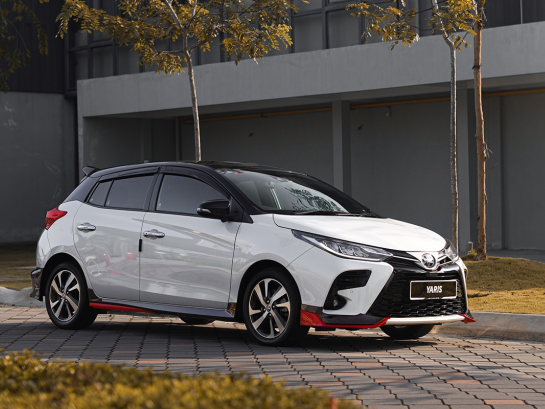
Toyota Yaris Interior Design Revealed: The Ideal Choice for Daily Commutes
AshleyJul 17, 2025

Highlights of the Toyota Yaris: The Perfect Fusion of Outstanding Power and Comfortable Handling
MichaelApr 16, 2025

Mazda Plans to Launch CX-20 in Southeast Asia to Compete with Toyota Yaris Cross
RobertMar 20, 2025
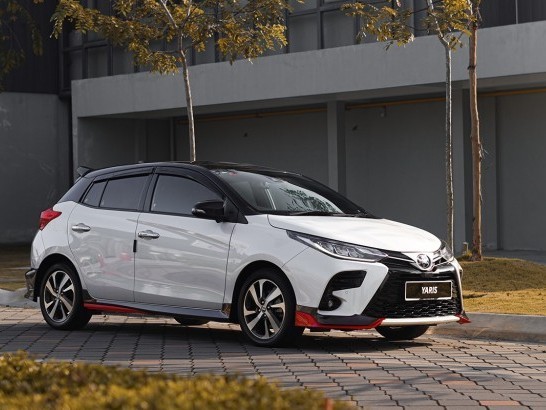
Is my Yaris fuel consumption normal? What should the fuel consumption per 100km be?
MichaelFeb 28, 2025

Toyota takes the crown at the second stop of the 2025 WRC, the GR Yaris helps Toyota take the top of the points table
JamesFeb 19, 2025
View More


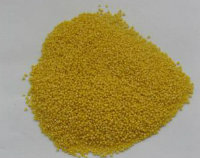

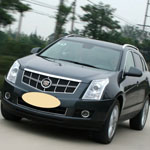







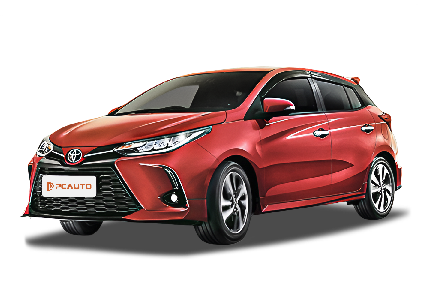





Pros
Cons